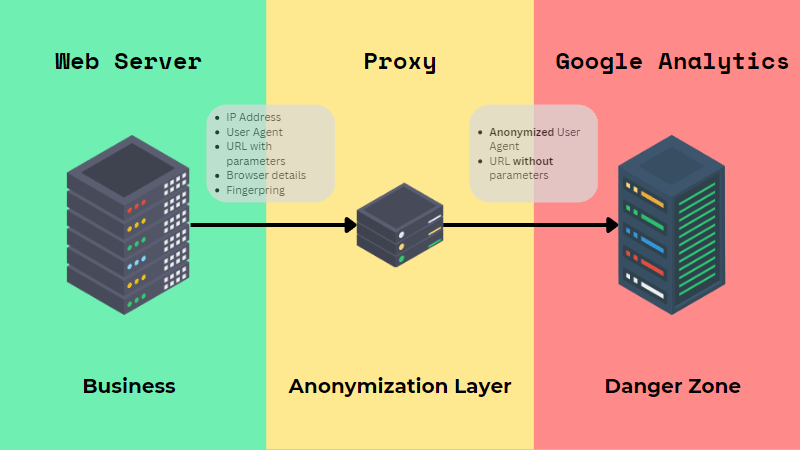Understanding the Art of Overcoming Information Collection Limitations in Google Analytics for Better Decision-Making
In the realm of electronic analytics, the ability to essence meaningful insights from information is extremely important for notified decision-making. By employing innovative techniques and calculated methods, organizations can boost their data top quality, unlock hidden understandings, and lead the method for more efficient and enlightened choices.
Information Top Quality Evaluation
Analyzing the quality of data within Google Analytics is an important step in ensuring the dependability and precision of insights stemmed from the collected information. Information quality analysis entails reviewing various elements such as precision, efficiency, consistency, and timeliness of the data. One vital aspect to consider is information precision, which refers to exactly how well the information reflects real values of the metrics being gauged. Incorrect information can cause defective verdicts and misdirected business decisions.
Efficiency of data is an additional critical aspect in evaluating data quality. Consistency checks are also crucial in information quality analysis to recognize any inconsistencies or anomalies within the information set. By prioritizing data top quality assessment in Google Analytics, companies can improve the reliability of their analytics records and make even more informed choices based on exact insights.
Advanced Tracking Techniques
Utilizing advanced tracking strategies in Google Analytics can considerably enhance the depth and granularity of data gathered for even more comprehensive evaluation and understandings. One such method is occasion monitoring, which enables the monitoring of specific communications on an internet site, like click switches, downloads of documents, or video clip sights. By executing event tracking, organizations can gain a much deeper understanding of individual actions and interaction with their on the internet content.
Furthermore, personalized measurements and metrics offer a way to customize Google Analytics to certain business demands. Customized measurements enable for the production of brand-new information factors, such as user duties or customer sections, while customized metrics make it possible for the monitoring of unique performance signs, like profits per user or ordinary order worth.
Additionally, the use of Google Tag Manager can streamline the application of monitoring codes and tags across a site, making it easier to handle and deploy innovative tracking arrangements. By harnessing these sophisticated tracking strategies, companies can open useful insights and enhance their on the internet techniques for much better decision-making.
Custom-made Dimension Application
To boost the depth of information gathered in Google Analytics beyond advanced monitoring strategies like event monitoring, companies can implement personalized dimensions for even more tailored understandings. Custom measurements permit services to specify and gather specific data points that pertain to their one-of-a-kind objectives and purposes (What Data Does Google Analytics Prohibit Collecting?). By appointing custom-made measurements to various components on a site, such as individual communications, demographics, or session details, organizations can acquire a more granular understanding of exactly how individuals involve with their on the internet residential properties

Acknowledgment Modeling Strategies
Efficient acknowledgment modeling is essential for understanding the influence of different advertising networks on conversion courses. By employing the appropriate acknowledgment design, companies can precisely attribute conversions to the ideal touchpoints along the consumer journey. One typical attribution model is the Last Interaction design, which provides credit rating for a conversion to the last touchpoint a customer interacted with prior to converting. While this model is basic and simple to carry out, it frequently oversimplifies the consumer trip, ignoring the impact of other touchpoints that added to the conversion.

Information Tasting Avoidance
When dealing with large volumes of data in Google Analytics, overcoming information tasting is vital to make certain accurate insights are obtained for informed decision-making. Data tasting happens when Google Analytics approximates patterns in information rather than analyzing the complete dataset, potentially leading to manipulated outcomes. By taking these positive steps to minimize data tasting, organizations can remove a lot more precise insights from Google Analytics, leading to better decision-making and improved overall performance.
Verdict
In final thought, understanding the art of getting over data collection constraints in Google Analytics is critical for making educated decisions. By carrying out a thorough data top quality assessment, carrying out sophisticated tracking strategies, utilizing customized dimensions, using acknowledgment modeling approaches, and staying clear of data tasting, companies can make sure that they have exact and dependable information to base their decisions on. This will eventually bring about a lot more effective methods and far better results for the organization.

Comments on “Expert's View: What Data Does Google Analytics Prohibit Collecting?”